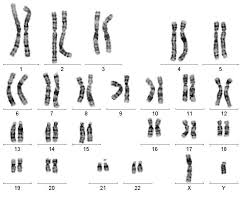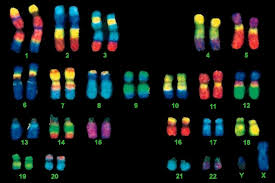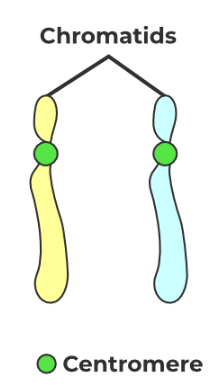A3.1 Diversity of Organisms
1/76
Earn XP
Description and Tags
Name | Mastery | Learn | Test | Matching | Spaced |
|---|
No study sessions yet.
77 Terms
What is an organism?
An individual plant, animal, bacterium or any living thing
What is variation and what are the three types of variation?
The difference between organisms e.g.
Visual appearances - fur colour and body length
Behaviour - mating rituals or levels of aggression
Biochemistry - antibiotic resistance or metabolic products
What are patterns of variation used for?
They are the basis of naming and classifying organisms
Are any two individuals identical?
No - there are even variations between members of the same species
Is there more variation between members of the same of different species?
Different species
What is variation the result of?
Both genetic and environmental factors
What do genes do?
They determine which proteins an organism can produce
How is genetic variation generated?
When mutations occur or different combinations of alleles during sexual reproduction
What does the term ‘species’ mean?
It is the term used for a group of organisms with shared traits and is how species have been named and classified
When was is developed?
17th century by biologists
What is the Morphological concept?
That a species is a group of organisms with a characteristic outward form and inner structure (size, shape, and body structure) - expectation that there is clear differences in the structure of all species
Who invented it?
Carl Linnaeus
Give an example of the Morphological concept
Mice of similar traits, from different countries, that have similar traits and are considered to be part of the same species, despite being unable to breed with each other.
Why system is used to give a species a scientific name?
Binomial system
What are the two parts of a scientific name using the binomial system?
The Genus (the first part of the name) and the species (the second part)
What has a capital letter?
Genus
e.g. what is the scientific name for humans?
Homo sapiens
What is the second way of classifying species?
Biological species concept
What is the biological species concept?
A species is a group of organisms that can successfully interbreed and produce fertile offspring
What does interbreeding allow?
Members of a species to share genes in a gene pool so they share many traits
What are the 3 limitations of the Biologicals species concept?
Asexual reproduction
Fertile hybrids
Extinction
Why is asexual reproduction a limitation?
Asexually reproducing organisms don’t interbreed, meaning their offspring is considered a new species according to the biological concept (more detail later)
Fertile hybrid limitations?
On rare occasions, animals of difference species can breed and produce fertile offspring. According to the concept, the offspring should be a new species, but according to scientists, for it to be a new species it needs to be a regular occurrence.
Extinction limitation?
If the animal is extinct, it is not possible to breed them so how do we know what species they belong to e.g. Woolly mammoths and elephants
What is speciation
Splitting of one population into two
How can this happen?
Natural selection or genetic drift
If a population lives in 2 different places and their traits diverge over time to adapt to their environment
Is this process immediate or gradual?
Gradual - over thousands of years
Is it east or hard for taxonomists to classify organisms into species?
Sometimes very hard as the accumulation of differences between the populations happens over a variety of times (negligible to rapid)
What is the decision regarded as?
Arbitrary
What is a characteristic feature of members of a species?
Number of chromosomes
What chromosome number is given to a species?
diploid number
Is it odd or even?
even
How many chromosomes do humans have?
46
How many chromosomes do chimpanzees have?
48
What is a karyotype?
The number and type of chromosomes in a cell or organism
What is a karyogram?
Photos and diagrams where chromosomes of an organism are shows in homologous pairs of decreasing length

What stage must a cell be in to prepare a karyogram?
Metaphase of mitosis where they are examined microscopically
Can the cells be overlapping?
No
They are digitally classified into homologous pairs using what 3 things?
Stains
Chromosome sizes
Centromere
How are stains used?
They give chromosomes distinct patters with different bonding patterns, with different bonding in each type of homologous chromosome.

How are chromosome sizes used?
The sizes vary between chromosomes but each chromosome pair is approximately the same length
How s the centromere used?
Each chromosome has a centromere where there is a constriction of the chromatids. Its position is the same in a chromosome pair and can be anywhere from the middle to the ends

What is the hypothesis involving our chromosome 2?
Humans = 46, Chimpanzees = 48
That million of years ago, our ancestors had 48 chromosomes but during human evolution, 2 fused together.
What evidence is there to support this?
Chromosome bonding patterns. The patters of human chromosome 2 is very similar to that of chromosome 12 & 13 in chimps

Is this strong evidence?
Yes - The bonding patterns and remnants of extra telomeres as well as the extra chromosome are strong evidence.
How can a hypothesis be scientifical?
If it is testable either experimentally or observably so the hypothesis can be proven false
Is the chromosome hypothesis scientifical?
Yes because evidence would be obtained to prove it false
What is a genome?
All the genetic information of one individual or a group of organisms. Its is the entire base sequence of the DNA molecule.
What functional units does a genome have?
Genes
What is a gene?
A length of DNA carrying hundreds/ thousands if bases.
Do members of the same species have the same genes?
Yes - they often have the same genes, in the same sequence, in each of their chromosomes
What does this do?
Promotes genetic diversity through meiosis
What does the genome of a species and the arrangement of genes on the chromosome illustrate?
the unity of living organisms
What are alternative forms of genes?
alleles - alleles of a gene differ from each other in the base sequence
What does SNPs stand for?
Single Nucleotide Polymorphins
What is a SNP
Positions in a gene where alternative bases may be found - 100 million have been discovered in humans
What does G - G mean between paternal and maternal alleles?
The child is homozyguos because the alleles inherited are the same
What does A- C mean between paternal and maternal alleles?
The child is heterozygous because the alleles inherited are different
What are the two types of variation in genomes?
Variation in genome size
Variation in base sequence
What is genome size?
The total amount of DNA in a species
There is a huge variation of genome sizes in….
Eukaryotes
Can gene numbers be changed in eukaryotic cells?
Yes - they can be added, removed, with sections of chromosomes duplicated or deleted.
Define a polyploidy?
The addition of whole sets of chromosomes
Genomes vary in the amount of ……….
non-coding DNA
What will differ in two population so a species?
The position of their base sequence
What happens if the two populations diverge?
More differences will accumulate
After hundreds of millions of years, what will have happened?
Immense diversity will have developed in the base sequence.
How come in some gene base sequences there are few differences?
Because they are genes with a vital function e.g. cytochrome c-a protein used in respiration
What is genome size variations linked with
Organism complexity (not not always proportional with some unexpectedly large genomes)
How are genome sizes given in eukaryotes?
As nuclear DNA contents haploid cells like gametes
How are genome sizes given in prokaryotes?
As DNA content of a typical cell
What are the 2 types of measurement
In mass (pictograms e.g. 1pg = 10^-12 grams)
N° of base pairs/ megabase pairs (1 Mbp = 10^6 base pairs)
Define whole genome sequencing
Determining the entire base sequence of an organisms DNA.
The speed of sequencing is _________ and the cost is __________.
increasing rapidly, decreasing
What would happen if we sequenced the genomes of all species?
Would reveal relationships and evolutionary origins
What are the current uses of whole genome sequencing?
Allows an understanding of human origins and worldwide migration
Provides data about genetic diseases and genes affecting health
What are its future uses?
The possibility of sequencing every humans genome
Creating personalized medicine to predict and treat health problems